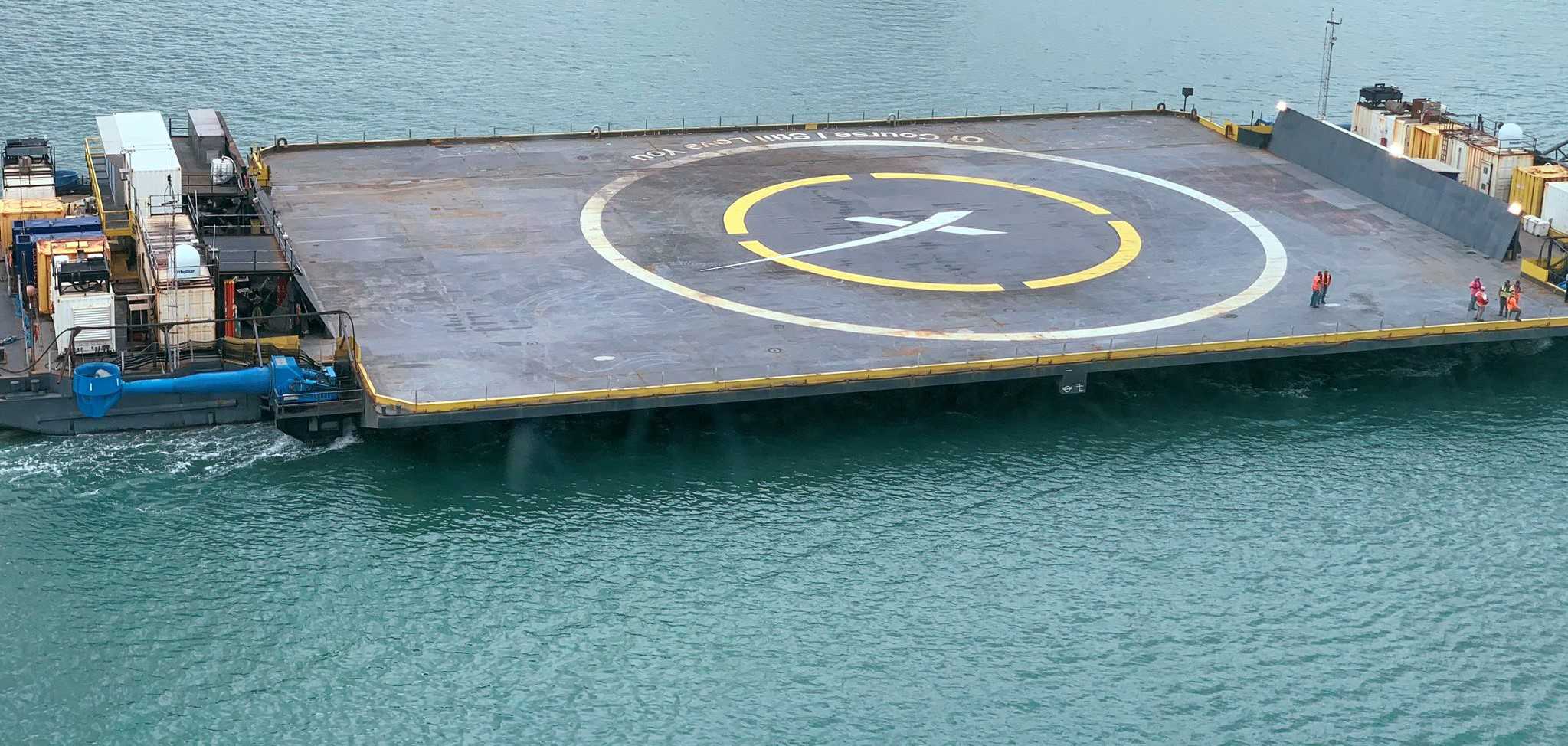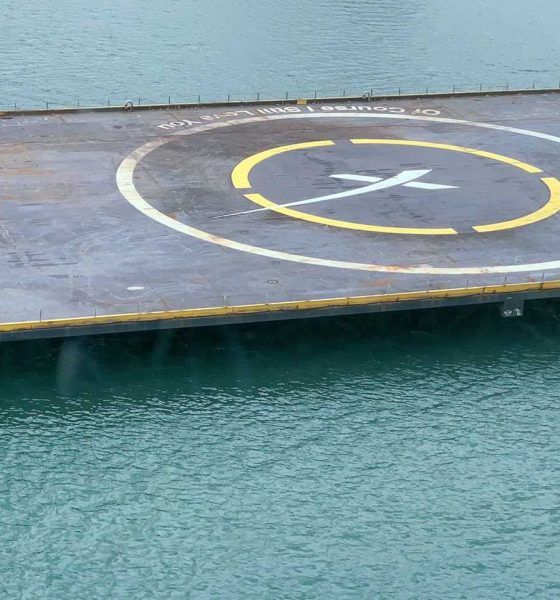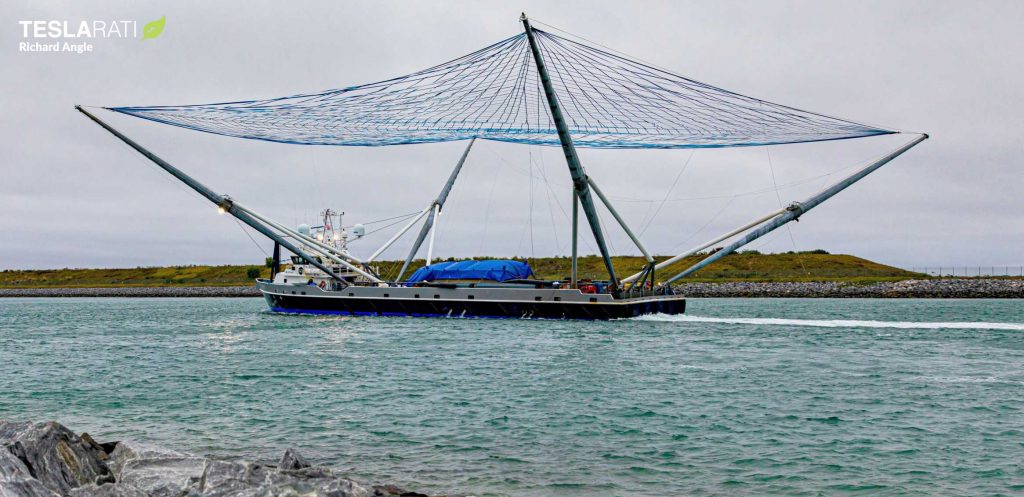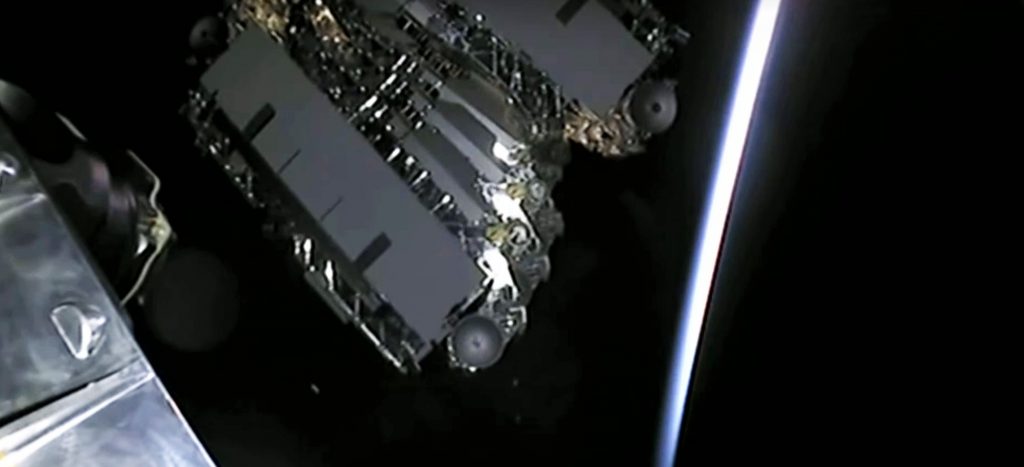

News
SpaceX rings in the New Year with preparations for first Falcon 9 launch of 2020
SpaceX’s first Falcon 9 launch of 2020 – and the new decade – is just around the corner after drone ship Of Course I Still Love You (OCISLY) departed Port Canaveral on Monday to prepare for its 27th booster landing attempt.
Known as Starlink-2, SpaceX’s first launch of the new year slipped a handful of days from December 30th to January 3rd and finally January 6th and will be the company’s second launch of 60 upgraded Starlink v1.0 satellites, as well as the third dedicated Starlink launch overall. Just one of potentially dozens of SpaceX launches planned in 2020, the year is setting up to be – by a long shot – the company’s most ambitious year ever.
Meanwhile, Starlink-2 alone is set to ring in at least two significant milestones, pushing the nascent broadband internet constellation a step closer to serving customers and Falcon 9 reusability a step closer to being fully realized.
Drone ship OCISLY departed Port Canaveral on December 30th and is now being towed some 630 km (390 mi) downrange to Falcon 9’s planned Atlantic Ocean recovery location. SpaceX’s first launch and landing of 2020 will also be the three-year-old drone ship’s 27th attempted Falcon booster recovery and – hopefully – 23rd successful recovery.
Simultaneously, SpaceX technicians are in the midst of preparing other recovery fleet assets for what appears to be a partial fairing recovery attempt. Twin fairing catchers Ms. Tree and Ms. Chief debuted on their first simultaneous fairing catch attempt in December 2019 but each unfortunately missed their catches, instead picking up the floating fairing halves off the surface of the Atlantic and returning to port on December 18th.

The fairing halves were thus still successfully recovered and may be able to fly again on a future Starlink mission, but both fairing recovery ships suffered damage during their first simultaneous deployment. Ms. Tree suffered minimal damage in the form of tears to its secondary net – an easy fix – but Ms. Chief was not as lucky and somehow lost one of the two white booms that support each of her four arms.
That wounded arm was visibly hanging lower than its companions when Ms. Chief returned to port and technicians have since removed all of her arms, presumably evaluating whether the ordeal overstressed any components or caused significant damage.
Unsurprisingly, Ms. Chief will reportedly not take part in the fairing recovery portion of SpaceX’s imminent Starlink-2 launch, although it’s starting to look like Ms. Tree will be able to attempt a catch. SpaceX will still attempt to extract both fairing halves from the Atlantic even if the catch attempt fails and appears to be preparing GO Navigator to recover the half that would have otherwise been assigned to Ms. Chief.
Two milestones, one launch
As implied by the Starlink-2 title, SpaceX’s first launch of 2020 will feature the third batch of 60 Starlink satellites. Excluding 9 Starlink v0.9 satellites that have been intentionally lowering their orbits over the last several months to hasten reentry, this will give SpaceX a constellation of at least 170 operational satellites less than eight months after the company began launching the satellites.

This may not immediately seem significant but 170 operational satellites in orbit could make Starlink the world’s largest satellite constellation and SpaceX the world’s largest constellation operator. The only known competitor that comes close is Planet Labs, an Earth observation company believed to have approximately 150-170 operational satellites in orbit – most of which are 5-10 kg (10-20 lb) ‘Doves’ roughly the size of a loaf of bread.
Put another way, after Starlink-2, SpaceX will have around 45 metric tons (100,000 lb) of functional Starlink satellites in orbit, a constellation mass probably only rivaled by major geostationary commsat operators, global navigation satellites, and a few other high-value military constellations.
Meanwhile, according to NASASpaceflight.com, SpaceX has assigned Falcon 9 booster B1049.3 to its Starlink-2 mission, meaning that the launch will mark the second time that a single SpaceX rocket has flown four orbital-class missions. This follows on the footsteps of the November 11th, 2019 Starlink-1 launch, which saw Falcon 9 B1048 become the first booster to fly four times.
At this point, SpaceX has two additional Starlink launches scheduled in January and has plans for as many as 38 orbital launches throughout 2020. To complete that incredibly ambitious manifest, SpaceX will have to dig deep into its fleet of reusable rockets, meaning that Falcon 9 B1049’s imminent fourth launch is almost certainly just the tip of the iceberg. Falcon 9 B1049 is scheduled to launch SpaceX’s Starlink-2 mission no earlier than (NET) 9:20 pm ET, January 6th (02:20 UTC, Jan 7).
Check out Teslarati’s Marketplace! We offer Tesla accessories, including for the Tesla Cybertruck and Tesla Model 3.

Elon Musk
Tesla’s Elon Musk: 10 billion miles needed for safe Unsupervised FSD
As per the CEO, roughly 10 billion miles of training data are required due to reality’s “super long tail of complexity.”

Tesla CEO Elon Musk has provided an updated estimate for the training data needed to achieve truly safe unsupervised Full Self-Driving (FSD).
As per the CEO, roughly 10 billion miles of training data are required due to reality’s “super long tail of complexity.”
10 billion miles of training data
Musk comment came as a reply to Apple and Rivian alum Paul Beisel, who posted an analysis on X about the gap between tech demonstrations and real-world products. In his post, Beisel highlighted Tesla’s data-driven lead in autonomy, and he also argued that it would not be easy for rivals to become a legitimate competitor to FSD quickly.
“The notion that someone can ‘catch up’ to this problem primarily through simulation and limited on-road exposure strikes me as deeply naive. This is not a demo problem. It is a scale, data, and iteration problem— and Tesla is already far, far down that road while others are just getting started,” Beisel wrote.
Musk responded to Beisel’s post, stating that “Roughly 10 billion miles of training data is needed to achieve safe unsupervised self-driving. Reality has a super long tail of complexity.” This is quite interesting considering that in his Master Plan Part Deux, Elon Musk estimated that worldwide regulatory approval for autonomous driving would require around 6 billion miles.
FSD’s total training miles
As 2025 came to a close, Tesla community members observed that FSD was already nearing 7 billion miles driven, with over 2.5 billion miles being from inner city roads. The 7-billion-mile mark was passed just a few days later. This suggests that Tesla is likely the company today with the most training data for its autonomous driving program.
The difficulties of achieving autonomy were referenced by Elon Musk recently, when he commented on Nvidia’s Alpamayo program. As per Musk, “they will find that it’s easy to get to 99% and then super hard to solve the long tail of the distribution.” These sentiments were echoed by Tesla VP for AI software Ashok Elluswamy, who also noted on X that “the long tail is sooo long, that most people can’t grasp it.”
News
Tesla earns top honors at MotorTrend’s SDV Innovator Awards
MotorTrend’s SDV Awards were presented during CES 2026 in Las Vegas.

Tesla emerged as one of the most recognized automakers at MotorTrend’s 2026 Software-Defined Vehicle (SDV) Innovator Awards.
As could be seen in a press release from the publication, two key Tesla employees were honored for their work on AI, autonomy, and vehicle software. MotorTrend’s SDV Awards were presented during CES 2026 in Las Vegas.
Tesla leaders and engineers recognized
The fourth annual SDV Innovator Awards celebrate pioneers and experts who are pushing the automotive industry deeper into software-driven development. Among the most notable honorees for this year was Ashok Elluswamy, Tesla’s Vice President of AI Software, who received a Pioneer Award for his role in advancing artificial intelligence and autonomy across the company’s vehicle lineup.
Tesla also secured recognition in the Expert category, with Lawson Fulton, a staff Autopilot machine learning engineer, honored for his contributions to Tesla’s driver-assistance and autonomous systems.
Tesla’s software-first strategy
While automakers like General Motors, Ford, and Rivian also received recognition, Tesla’s multiple awards stood out given the company’s outsized role in popularizing software-defined vehicles over the past decade. From frequent OTA updates to its data-driven approach to autonomy, Tesla has consistently treated vehicles as evolving software platforms rather than static products.
This has made Tesla’s vehicles very unique in their respective sectors, as they are arguably the only cars that objectively get better over time. This is especially true for vehicles that are loaded with the company’s Full Self-Driving system, which are getting progressively more intelligent and autonomous over time. The majority of Tesla’s updates to its vehicles are free as well, which is very much appreciated by customers worldwide.
Elon Musk
Judge clears path for Elon Musk’s OpenAI lawsuit to go before a jury
The decision maintains Musk’s claims that OpenAI’s shift toward a for-profit structure violated early assurances made to him as a co-founder.

A U.S. judge has ruled that Elon Musk’s lawsuit accusing OpenAI of abandoning its founding nonprofit mission can proceed to a jury trial.
The decision maintains Musk’s claims that OpenAI’s shift toward a for-profit structure violated early assurances made to him as a co-founder. These claims are directly opposed by OpenAI.
Judge says disputed facts warrant a trial
At a hearing in Oakland, U.S. District Judge Yvonne Gonzalez Rogers stated that there was “plenty of evidence” suggesting that OpenAI leaders had promised that the organization’s original nonprofit structure would be maintained. She ruled that those disputed facts should be evaluated by a jury at a trial in March rather than decided by the court at this stage, as noted in a Reuters report.
Musk helped co-found OpenAI in 2015 but left the organization in 2018. In his lawsuit, he argued that he contributed roughly $38 million, or about 60% of OpenAI’s early funding, based on assurances that the company would remain a nonprofit dedicated to the public benefit. He is seeking unspecified monetary damages tied to what he describes as “ill-gotten gains.”
OpenAI, however, has repeatedly rejected Musk’s allegations. The company has stated that Musk’s claims were baseless and part of a pattern of harassment.
Rivalries and Microsoft ties
The case unfolds against the backdrop of intensifying competition in generative artificial intelligence. Musk now runs xAI, whose Grok chatbot competes directly with OpenAI’s flagship ChatGPT. OpenAI has argued that Musk is a frustrated commercial rival who is simply attempting to slow down a market leader.
The lawsuit also names Microsoft as a defendant, citing its multibillion-dollar partnerships with OpenAI. Microsoft has urged the court to dismiss the claims against it, arguing there is no evidence it aided or abetted any alleged misconduct. Lawyers for OpenAI have also pushed for the case to be thrown out, claiming that Musk failed to show sufficient factual basis for claims such as fraud and breach of contract.
Judge Gonzalez Rogers, however, declined to end the case at this stage, noting that a jury would also need to consider whether Musk filed the lawsuit within the applicable statute of limitations. Still, the dispute between Elon Musk and OpenAI is now headed for a high-profile jury trial in the coming months.








